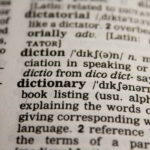To prepare for and improve upon summer reading activities and adventures, this article offers reading comprehension strategies, techniques and worksheets for helping students and youngsters to read more effectively and with greater understanding.
Table of Contents:
- Introduction
- Pre-Reading Activities
- During-Reading Activities
- Post-Reading Activities
- Additional strategies for learning and teaching reading comprehension
- Resources for Learning and Teaching Reading Comprehension
- FAQs about Worksheets and Strategies for Improving Reading Comprehension
- Conclusion
Introduction
Reading comprehension plays a vital role in academic success, professional growth, and personal development – the ability to comprehend written information is crucial. Reading comprehension is the ability to understand and interpret the meaning of a text. It involves not just decoding words, but also comprehending the underlying message, analyzing the author’s intent, and making connections with prior knowledge.
Effective reading comprehension is a multifaceted skill that requires practice, engagement, and the right strategies. For many individuals, improving reading comprehension can be a challenge. Fortunately, there are effective strategies and helpful worksheets available to enhance this skill. In this article, we will explore various strategies and worksheets for improving reading comprehension, providing you, or your students, with valuable tools to enhance understanding of written texts.
Pre-Reading Activities:
- Brainstorming: Ask students to brainstorm what they already know about the topic of the text. This can help them to activate their prior knowledge and to make predictions about what they will read.
- Discussion: Discuss the text with students. This can help them to learn new information about the topic and to understand the text better.
- Questions: Ask students questions about the text. This can help them to focus their attention on the text and to think critically about what they are reading.
- Utilize Graphic Organizers: Graphic organizers, such as concept maps, story maps, or Venn diagrams, provide a visual representation of information and aid in understanding complex concepts. Use them to map out relationships between ideas, identify main themes, and create a cohesive structure of the text in your mind.
During-Reading Activities:
- Active Reading: Engage with the text actively while reading – highlight key points, underline important details, or jo down notes in the margins. These annotations serve as visual cues and help you internalize the content more effectively.
- Annotating: Jot down notes in the margins or on sticky notes while reading. Writing down your thoughts, questions, and connections to the text encourages active engagement and deeper comprehension.
- Highlighting: Use a highlighter or underline key information, main ideas, supporting details, and unfamiliar vocabulary. This technique helps you focus on important elements and aids in later review.
- Visualizing: Create mental images of what your or your students are reading. This can help them to better understand the text and to remember what they have read.
- Making predictions: Encourage students to make predictions about what will happen next in the text. This can help them to stay engaged in the reading and to think critically about the text.
- Reflect and Ask Questions: As you read, take moments to pause and reflect on the content. Ask yourself questions like “What is the author trying to convey?” or “How does this information relate to the broader context?” This critical thinking fosters deeper comprehension and encourages analytical skills.
Post-Reading Activities:
- Practice Summarization: After completing a section or a chapter, practice summarizing the main ideas in your own words. This exercise reinforces comprehension, strengthens memory retention, and enhances the ability to articulate key points concisely. Here are more summarizing worksheets.
- Text Analysis: These types of worksheets promote critical thinking and analysis of texts, including excerpts from articles, essays, or literary works and ask students to analyze the author’s tone, persuasive techniques, or narrative structure. Students can delve deeper into the subtext and evaluate the effectiveness of the author’s arguments.
- Context Clues. These help to focus on understanding unfamiliar words through context clues. Select passages that contain challenging vocabulary and then infer the meaning of those words based on the surrounding text. This exercise enhances vocabulary skills and strengthens overall comprehension abilities.
- Writing: Writing about the text you’ve just read is extremely important to build reading comprehension. Doing this helps students to express their understanding of the text and to develop their writing skills.
- Creating a project: Creating a project about the text can help students apply their understanding of the text to real-world situations and to develop their creativity.
Additional strategies for learning and teaching reading comprehension:
- Passage-Based Questions. Worksheet exercises that focus on answering questions based on a passage are excellent for honing comprehension skills. These questions can range from identifying main ideas, supporting details, making inferences, or evaluating the author’s perspective.
- Choose books that are appropriate for your students’ reading level. Books that are too difficult will frustrate students and make it difficult for them to learn. Books that are too easy will not challenge them and will not help them to improve their reading comprehension skills.
- Vocabulary Building. A strong vocabulary is the foundation of reading comprehension. Expand your word bank by regularly learning new words, their meanings, and how they are used in context. Utilize online resources, flashcards, or even a word-of-the-day app to gradually enhance your lexicon.
- Make reading fun! Reading should be an enjoyable experience for students. If students are not enjoying themselves, they are less likely to want to read. There are many ways to make reading fun, such as:
- Reading aloud to students. This is a great way to introduce new books and to model good reading comprehension skills.
- Creating a reading nook or reading area. This can be a cozy spot where students can curl up with a good book.
- Inviting guest readers to your classroom. This can be a great way to expose students to different genres of books and to meet new people.
- Holding reading contests or challenges. This can be a fun way to motivate students to read more.
- Rewarding students for reading. This can be done with stickers, prizes, or simply with praise.
Resources for Learning and Teaching Reading Comprehension
- 1st Grade Reading Comprehension – Pet Dog
- Aesop’s Fables Reading Comprehension with Answer Keys
- Beginning, Middle, End Story Summary Sheet
- Cornell Notes Template
- Critical Reading Questions
- Developing Reading Comprehension Questions
- Earth Day Reading Comprehension Worksheet with answer key
- Figurative Language
- How to Annotate a Textbook
- How to Annotate a Work of Fiction
- How to Create Vocabulary Flashcards with Vocabulary Flashcard Example
- How to Evaluate an Author’s Intent
- How to Identify Writing Patterns
- How to Infer – Inferencing
- How to Make a Concept Map with Concept Map Template
- How to Make a KIM Chart with KIM Vocabulary Chart Template
- How to Make a Story Map with Story Map Template
- How to Make a Timeline with Timeline Template
- How to Make a Word Web with Word Web Template
- How to Make an Outline with Outlining Template
- How to Preview a Text
- How to Read Visual Aids
- How to Use Context Clues to Define Words
- How to Use Questioning to Improve Reading Comprehension
- How to Use Word-Part Clues to Define Words
- Making Connections with the Story
- Making Inferences Chart
- Mapping Your Story
- Paraphrasing Tips
- Predict and Review Form for Short Stories
- Reading Comprehension – ‘A Day at the Beach’, 8-12 year olds
- Reading Comprehension – ‘MLK Day’, 9-13 year olds
- Reading Comprehension – The Attention Components
- Reading Comprehension – Wikipedia
- Reading Comprehension Instruction for Grades K-3
- Reading Comprehension for Older Readers
- Reading Comprehension Tips
- Specialized Terminology for Reading Comprehension
- Story Plot Graph
- Story Prediction Form
- Story Web Reading Form
- Strategies for Reading
- Summarizing for Reading Comprehension
- Synthesizing What You Read
- Teach Comprehension Strategies
- Teaching Reading Comprehension to Students in Grades 4-6
- The Origins of Halloween Reading Comprehension
Online Resources for Learning and Teaching Reading Comprehension
- Active Reading Strategies, for older students
- Reading Comprehension Techniques
- Reading Comprehension Practice Tests 1
- Reading Comprehension Practice Tests 2
- 5 Tech Tools that Help Improve Reading Comprehension
- 7 Simple Strategies To Improve Reading Comprehension
- Reading Comprehension Activities from Freereading.net
Reading Comprehension Worksheets from Easyteacherworksheets.com:
- Kindergarten Reading Comprehension
- Grade 1 Reading Comprehension
- Grade 2 Reading Comprehension
- Grade 3 Reading Comprehension
- Grade 4 Reading Comprehension
- Grade 5 Reading Comprehension
- Grade 6 Reading Comprehension
- Middle School Reading Worksheets
- Grade 7 Reading Comprehension
- Grade 8 Reading Comprehension
- Grade 9 Reading Comprehension
- Grade 10 Reading Comprehension
- Grade 11 Reading Comprehension
- Grade 12 Reading Comprehension
Reading Comprehension Worksheets from K12reader.com:
- 1st Grade Reading Comprehension Worksheets
- 2nd Grade Reading Comprehension Worksheets
- 3rd Grade Reading Comprehension Worksheets
- 4th Grade Reading Comprehension Worksheets
- 5th Grade Reading Comprehension Worksheets
- 6th Grade Reading Comprehension Worksheets
- 7th Grade Reading Comprehension Worksheets
- 8th Grade Reading Comprehension Worksheets
- 9th-10th Grade Reading Comprehension Worksheets
Reading Comprehension Worksheets from Ereadingworksheets.com:
- Nonfiction Passages with Questions
- Short Stories with Questions
- Inferences Worksheets
- Main Idea Worksheets
- Theme Worksheets
- Story Structure Worksheets
- Characterization Worksheets
- Setting Worksheets
- Summary Worksheets
- Making Predictions Worksheets
Reading Comprehension Worksheets from Myfreeenglishworksheets.com:
- Grade 1 Worksheets
- Grade 2 Worksheets
- Grade 3 Worksheets
- Grade 4 Worksheets
- Grade 5 Worksheets
- Grade 6 Worksheets
FAQs about Worksheets and Strategies for Improving Reading Comprehension
Q1: How often should I practice these worksheets and strategies?
A1: The frequency of practice depends on your goals and availability. However, regular practice is key to improving reading comprehension. Aim to dedicate at least 15-30 minutes per day to these activities for optimal results.
Q2: Can the worksheets and strategies listed above benefit all age groups?
A2: Yes, these worksheets and strategies can be adapted to suit learners of all ages. The level of difficulty and complexity may vary based on the individual’s reading level and comprehension skills.
Q3: Are there online resources available for these worksheets?
A3: Yes, numerous online platforms offer free (and paid) resources for worksheets and reading comprehension strategies. See several reputable, free websites above that provide reliable materials and exercises tailored to your needs.
Q4: Can these strategies be used for non-native English speakers?
A4: Absolutely! These worksheets and strategies are beneficial for both native and non-native English speakers. They focus on improving reading comprehension skills, regardless of your language background.
Conclusion
In conclusion, mastering reading comprehension is a valuable skill that unlocks a world of knowledge, improves academic performance, and enhances professional growth. By using the strategies and suggested worksheets presented in this comprehensive guide, reading students can significantly improve their reading comprehension abilities. Remember, diligent practice and persistence are key for becoming a betting and more polished reader. For similar content, please see our posts on Reading Comprehension.
– love learning -your best ed lessons guide, Scott




